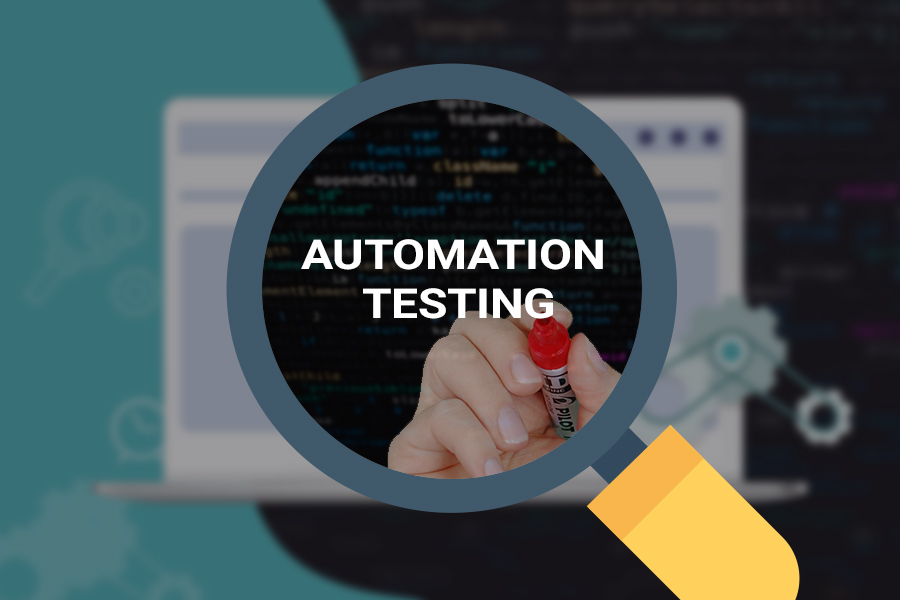Picking the Right Devices for Effective Automation Testing Solutions
From Guidebook to Automated Screening: A Comprehensive Overview to Transitioning Efficiently and Successfully
In the realm of software program screening, the change from handbook to automated procedures has ended up being a progressively crucial shift for organizations seeking to enhance efficiency and accuracy in their screening techniques. As modern technology remains to development, the requirement for seamless and effective computerized screening techniques has never ever been extra important. The journey from manual to automated screening is not without its obstacles, however when approached strategically and with a clear strategy in mind, the advantages can be considerable - automation testing. In this extensive overview, we will certainly discover crucial steps and considerations essential for an effective shift, from the initial option of devices to the combination of automation right into existing process. Stay tuned to uncover the understandings that will help lead the way for a smoother and more effective screening process.
Advantages of Automated Evaluating
Automated screening supplies many advantages, improving efficiency and accuracy in software application development procedures. One primary benefit is the substantial reduction in testing time. Automated examinations can be run all at once on numerous devices and operating systems, substantially quickening the testing phase compared to hands-on screening. This boosted performance allows for faster comments on the top quality of the software, allowing programmers to recognize and address problems immediately.
In addition, automated screening makes sure a greater level of precision in identifying issues. Uniformity in screening is also enhanced, as automated examinations carry out the exact same steps precisely each time they are run.
Choosing the Right Devices

Firstly, evaluate your requirements and objectives. Understand the extent of your project, the innovations involved, and the ability of your group. This evaluation will certainly assist you figure out the capabilities and features you call for in your screening devices.
Secondly, consider the compatibility of the devices with your existing systems and procedures. Seamless integration with your existing software growth lifecycle is necessary to make certain a smooth transition to automation.
In addition, assess the scalability and flexibility of the tools. As your screening requires develop, the devices should be able to adapt and fit adjustments properly.
Finally, consider the support and neighborhood around the tools. Durable support and an active individual area can offer important sources and aid when executing automated testing. By carefully taking into consideration these elements, you can select the right devices that straighten with your needs and established the phase for a successful change to automated screening.
Writing Reliable Examination Manuscripts

When crafting examination manuscripts, it is necessary to think about the details requirements of the software application being evaluated and guarantee that the manuscripts attend to all crucial capabilities. Descriptive and clear calling conventions for test manuscripts and examination situations can enhance readability and maintainability. Furthermore, incorporating mistake handling mechanisms within the test scripts can assist in determining and dealing with issues promptly.
In addition, organizing examination scripts into modular elements can improve reusability and scalability, reducing redundancy and boosting efficiency in examination script upkeep. Routine reviews and updates to evaluate manuscripts are crucial to maintain rate with developing software application demands and functionalities. By following these principles, testers can produce effective and durable test scripts that add considerably to the success of automated screening processes.
Integrating Automation Into Workflows
By flawlessly integrating automated screening tools like Selenium or Appium into the software program advancement lifecycle, teams can accomplish faster feedback on code adjustments, leading to quicker bug discovery and resolution. This combination permits for constant screening throughout the advancement procedure, guaranteeing that any issues are identified early on, resulting in greater software application top quality. Proper assimilation of automation tools needs collaboration between growth, testing, and procedures groups to establish a unified process that optimizes performance and effectiveness in providing high-quality software application why not try these out products.
Guaranteeing a Smooth Change
Successfully transitioning to automated testing entails meticulous planning and mindful implementation to reduce disturbances and make the most of performance in the software development process - automation testing. To make sure a smooth change, it is necessary to begin by performing a comprehensive evaluation of the existing screening processes and identifying areas where automation can bring one of the most significant advantages. Involving with all stakeholders early on while doing so, consisting of programmers, testers, and task supervisors, is crucial for gathering assistance and buy-in for the automation initiative
Interaction is crucial throughout this shift stage. Clear communication of the goals, benefits, and expectations of automated testing helps to handle any type of resistance or issues that may occur. Additionally, offering adequate training and resources for staff member to upskill in automation devices and methods is important for making sure a successful transition.

Final Thought
In final thought, transitioning from guidebook to automated screening offers numerous benefits, including boosted performance and reliability. By choosing the proper devices, creating reliable examination manuscripts, and incorporating automation seamlessly into workflows, organizations can guarantee a smooth and successful transition. It is vital to welcome automation as a beneficial possession in software program screening link procedures to boost total top quality and performance.
In the world of software application testing, the shift from manual to automated processes has actually come to be a significantly important transition for organizations looking for to improve effectiveness and accuracy in their testing techniques. Automated examinations can be run concurrently on several devices and running systems, drastically speeding up the screening stage compared to manual screening. Uniformity in screening is likewise improved, as automated examinations carry out the exact same steps specifically each time they are run.To make sure the successful implementation of picked screening tools, the production of reliable test scripts plays an essential role in validating the capability and efficiency of automated processes - automation testing. By following these concepts, testers can create reliable and robust examination scripts that add substantially to the success of automated testing procedures